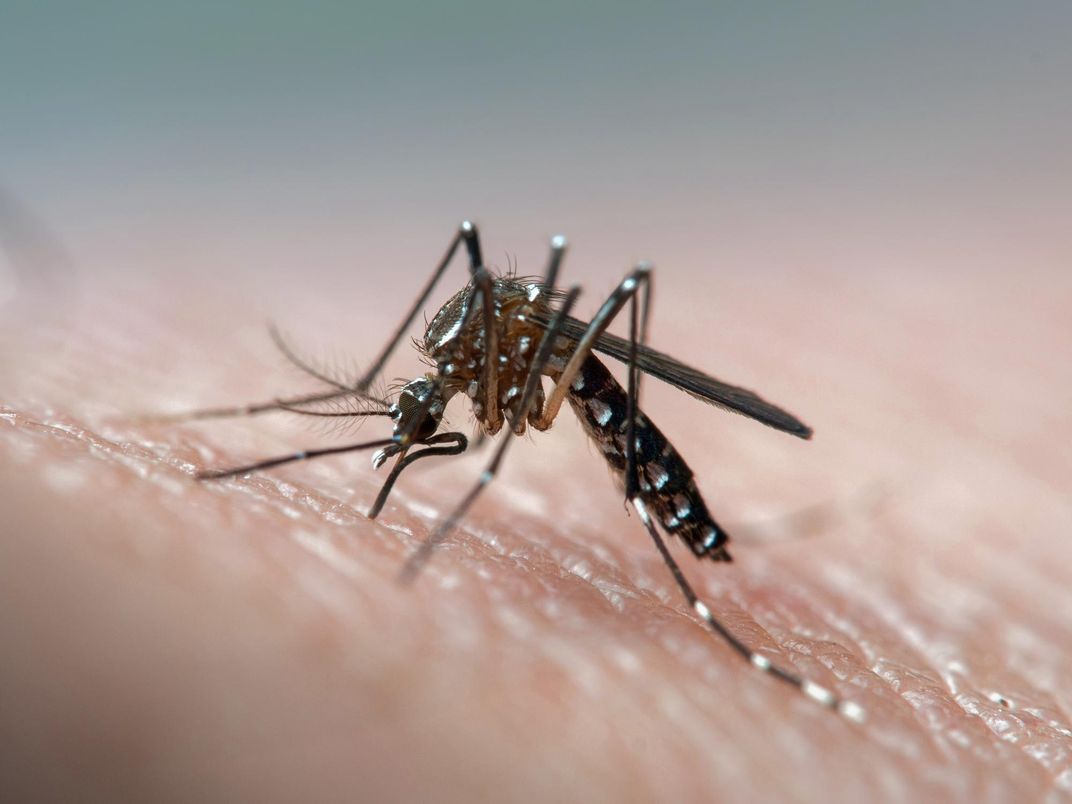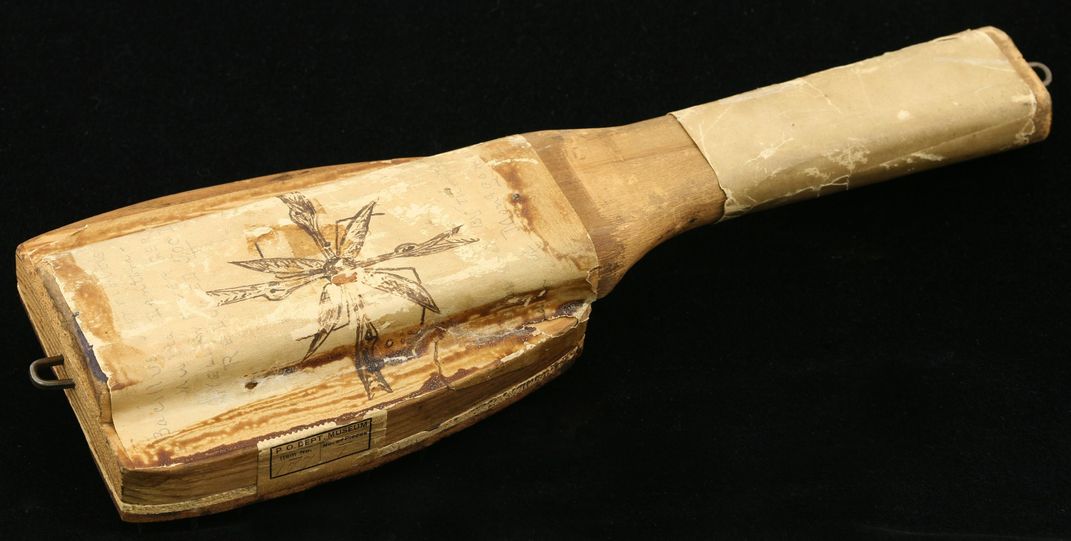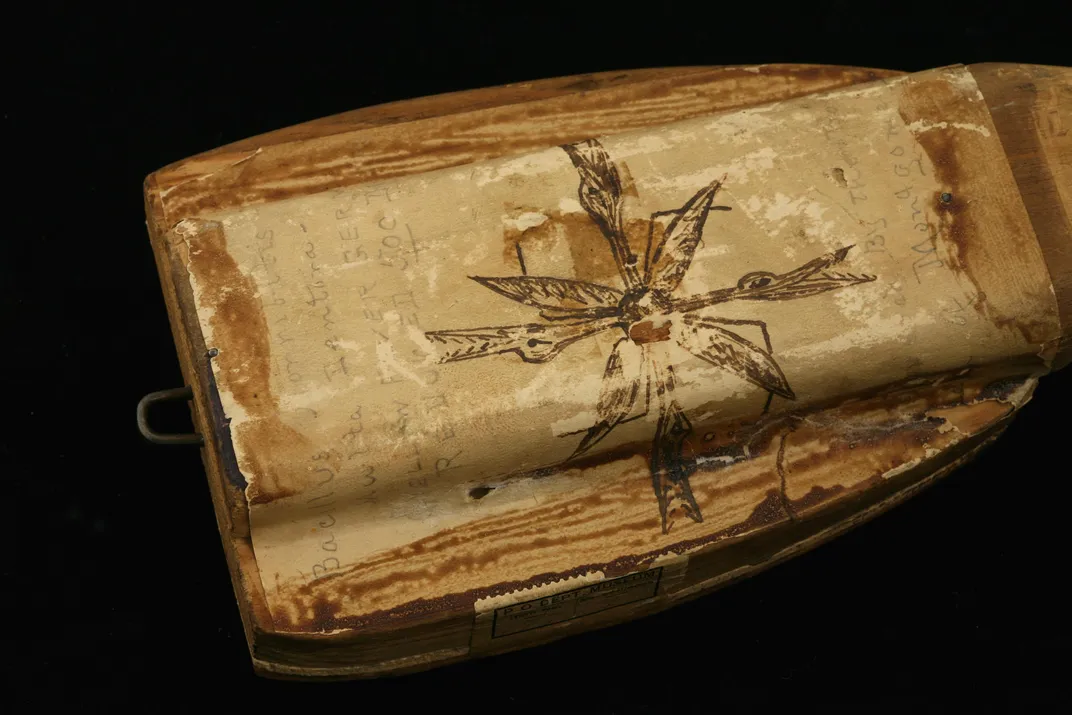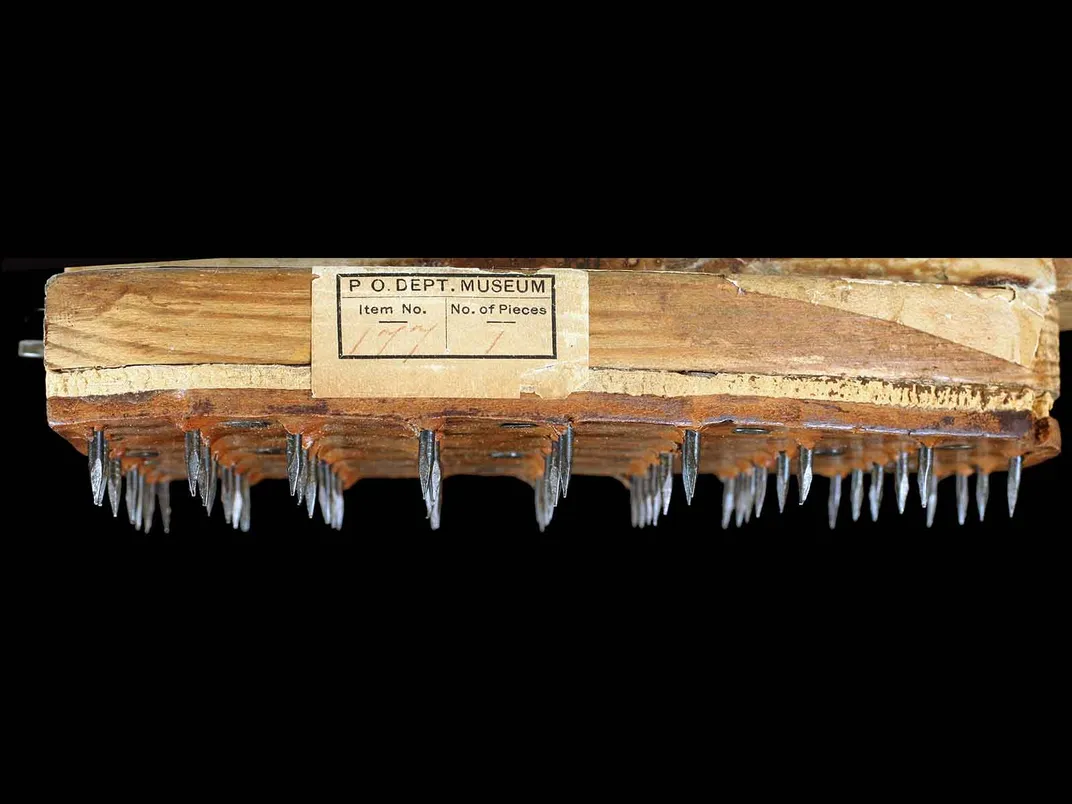Mail Handlers Used to Poke Holes in Envelopes to Battle Germs and Viruses
The postal service and scientists say there’s no need to sanitize the mail today
/https://tf-cmsv2-smithsonianmag-media.s3.amazonaws.com/filer/a9/8b/a98b11ad-9bc8-4506-bf3c-c62074c5fe67/npm-0_052985_251b.jpg)
Since the dawn of written communications, missives sent by card or letter have been the source of both joy and pain for recipients. During times of epidemics, however, the mail is viewed with extra wariness.
“The mail is something you welcome in times of normalcy, but just like any other kind of outside influence, it’s something that has been subjected to suspicion when there are times of strife, and when there’s an epidemic,” says Lynn Heidelbaugh, a curator at the Smithsonian’s National Postal Museum. Recipients worry whether the mail might bring contagion, “purely because it may have arrived from elsewhere and that elsewhere has been reporting infectious disease,” she says.
That’s as true today as it was in the late 19th century, when—before sanitizing sprays and disinfectant wipes—American post offices responded to persistent yellow fever epidemics with perforating paddles used in the fumigation of the mail.
In the collections of the National Postal Museum and on display in the William H. Gross Stamp Gallery one such paddle that was used by the Board of Health in Montgomery, Alabama, looks more like a diabolical hairbrush than a public health safety tool. The perforating paddle was used like a hammer to poke numerous holes in envelopes in order to allow the contents to get a full measure of fumigation, the second step in sanitizing the mail.
Yellow fever was a dreaded disease. Although many people contracted a mild form, about half of those infected died of the illness. There were at least 35 outbreaks in the United States between 1702 and 1800, and annual outbreaks took place from 1800 to 1879. As late as the 1890s, no one knew where the contagion came from or how it spread. The Marine Hospital Service, precursor to the U.S. Public Health Service, hypothesized in 1898 that yellow fever was spread by fomites, or materials such as bedding, clothing and other objects touched by someone with the disease. That led to concern that contaminants could arrive on letters sent in the mail.
Use of the paddles followed by fumigation with gasses like sulfur dioxide or formalin was widespread by the late 19th century. The practice proved both reassuring and annoying. “Your very kind letter—came here—punched as full of holes as your Donax sieve, and smelling of hellfire and brimstone—let a clean letter come from the pure of the Green Mountains and the cursed fools at the fumigating station seize it, punch it so that it is almost illegible, then pump an unbearable stink into it,” General F.E. Spinner, a former U.S. Treasurer, wrote to a Vermont friend in 1887.
The Smithsonian’s paddle is likely from 1899, says Heidelbaugh, when yellow fever was finally on the wane, with just a few mild outbreaks in New Orleans, and the Mississippi cities of Vicksburg, Natchez and Gulfport.

The paddle has a drawing of a mosquito on the back side; added some time after 1900 when Major Walter Reed, an Army surgeon, proved that mosquitos transmitted the virus that caused yellow fever. Handwritten above the mosquito is a peculiar verse: “Bacillus Horribilus/Multi Dentura, (Yellow Fever germ),” which is neither the correct name for the pathogen, nor the correct identification, since it is actually a virus, as Reed showed.
Yellow fever, a flavivirus, has parallels to SARS-CoV-2, the novel coronavirus that causes COVID. There are still no effective treatments for yellow fever. For many, especially in tropical Africa, South and Central America, where it is endemic, the main way to avoid it is behavioral: taking steps to minimize exposure to mosquitos. But unlike with SARS-CoV-2, there is a yellow fever vaccine.
Although it did not likely change anything, the postal service continued to perforate and fumigate mail into the early 1900s, “probably due to custom and public demand,” writes Emmet F. Pearson and Wyndham Miles in a 1980 article on U.S. mail disinfecting practices over the years.
Disinfection had been practiced for hundreds of years, starting in Europe in the 1300s and eventually was adopted in the New World, including by the American colonies. In the U.S., perforation, fumigation and often, quarantine, have been used to respond to scarlet fever, diphtheria, influenza, typhoid, tuberculosis, leprosy, poliomyelitis, cholera, smallpox and most recently, anthrax. Mail has been gassed in rail cars, baked in ovens and irradiated.
Sanitizing was not necessarily an illogical response. Mail handlers have been sickened with smallpox, which is particularly virulent and can live on many surfaces and even be revived from a dormant state. Reports in the medical literature in 1901 traced two separate smallpox outbreaks to recipients of letters from areas where smallpox was endemic at the time.
And then there were the anthrax attacks in 2001. At least five envelopes full of anthrax spores were mailed to politicians and the media. Twenty-two people contracted anthrax, five of whom died, including two postal workers at the Brentwood post office in Maryland. Thirty-five postal facilities and commercial mailrooms were contaminated, according to the U.S. Department of Justice.
/https://tf-cmsv2-smithsonianmag-media.s3.amazonaws.com/filer/f6/92/f692b47c-77b0-480f-8a3a-3d111b050d06/gettyimages-515512032.jpg)
The Postal Service soon began irradiating mail sent to zip codes in Washington D.C. associated with federal government agencies, and still does. The irradiated mail is aired out for a few days before it is sent on to the recipients. Sometimes that mail might arrive in a plastic bag noting that it had been sanitized—akin to the old days when mail would be given a special stamp letting the recipient know it had been fumigated.
In response to the novel coronavirus, the USPS has instituted procedures to clean its mail facilities and retail operations and to ensure that postal workers and carriers wear face coverings and maintain appropriate distances from each other and customers. But it is not sanitizing the mail, says USPS spokesman David Partenheimer. “The (Centers for Disease Control and Prevention) recognizes that while it may be possible that a person can get COVID-19 by touching a surface or object that has the virus on it and then touching their own mouth, nose, or possibly their eyes, this is not thought to be the main way the virus spreads,” the USPS says.
But plenty of Americans are again worried about fomites, including whether mail and packages can bring the virus into their house. A National Institutes of Health-sponsored study published in the New England Journal of Medicine in mid-March ramped up anxieties. The researchers found that the SARS-CoV-2 virus could survive up to 24 hours on cardboard. However, it was at a greatly reduced level of infectivity. And, the authors advised caution on interpreting their cardboard finding, saying that there was a ton of variation in the experiment that caused statistical “noise.”
Since that time, only one other study has shed any light on how the virus acts on various surfaces. The study, published in the British medical journal The Lancet, was reassuring in terms of the mail, finding that “no infectious virus could be recovered from printing and tissue papers” after three hours. But it took up to four days for infectious particles to disappear from paper money.
Fear of the mail is palpable. Cell biologist and virologist Carolyn Machamer says she received several hundred emails from around the world after she weighed in on the New England Journal study for a Johns Hopkins University website. Some correspondents “were afraid to even open a box that was shipped from China,” says Machamer, a Hopkins professor who has studied coronaviruses for decades.

People should not be concerned, she says. SARS-CoV-2 “is very short lived on porous surfaces,” such as cardboard and paper. Once outside the body, the virus is easily rendered non-infectious, because its fragile lipid envelope can be damaged or destroyed with alcohol, soap or ultraviolet light, she says. “The guts of the virus, the genome and the protein wrapping it will be exposed,” which renders it unable to reproduce, she says.
Jodie Dionne-Odom, an assistant professor of infectious diseases at University of Alabama, Birmingham, says she, too, has been inundated with questions about whether the mail is safe. The studies so far suggest the virus persists on surfaces and can be a route of transmission. But, she says, “you have to ask, does the presence of virus actually mean infectivity.”
Adds Dionne-Odom: “Just because you can detect virus on a surface doesn’t mean it could actually infect you if you then put your hand to your mouth.”
If the mail was carrying infection, it likely would have been exposed by now, says Dionne-Odom. “We haven’t seen a big outbreak in mail carriers in any country,” she says.
Both she and Machamer say that it’s an unlikely route of transmission. A mail carrier or delivery person would have to cough or sneeze on the item, expel enough virus to be infectious, then have it remain wet for long enough so that when someone touched it, and then touched their nose, mouth, or eyes, they could be infected.
“Opening your mail is a low-risk activity,” says Dionne-Odom. “There’s potentially even zero risk, but we have to have those studies,” she says.
Machamer doesn’t worry about her mail. “If people are concerned, they should not bring it into their house right away,” she says, suggesting that 24 hours would be more than sufficient to kill the virus.
Dionne-Odom agrees. If someone can lower their level of worry by cleaning cardboard or segregating mail, there’s no harm, she says. “I just don’t want you to think that is where the virus is likely to come from,” she says. “It’s more likely to come from the person coming into your house.”
/https://tf-cmsv2-smithsonianmag-media.s3.amazonaws.com/accounts/headshot/AliciaAult_1.png)



/https://tf-cmsv2-smithsonianmag-media.s3.amazonaws.com/accounts/headshot/AliciaAult_1.png)